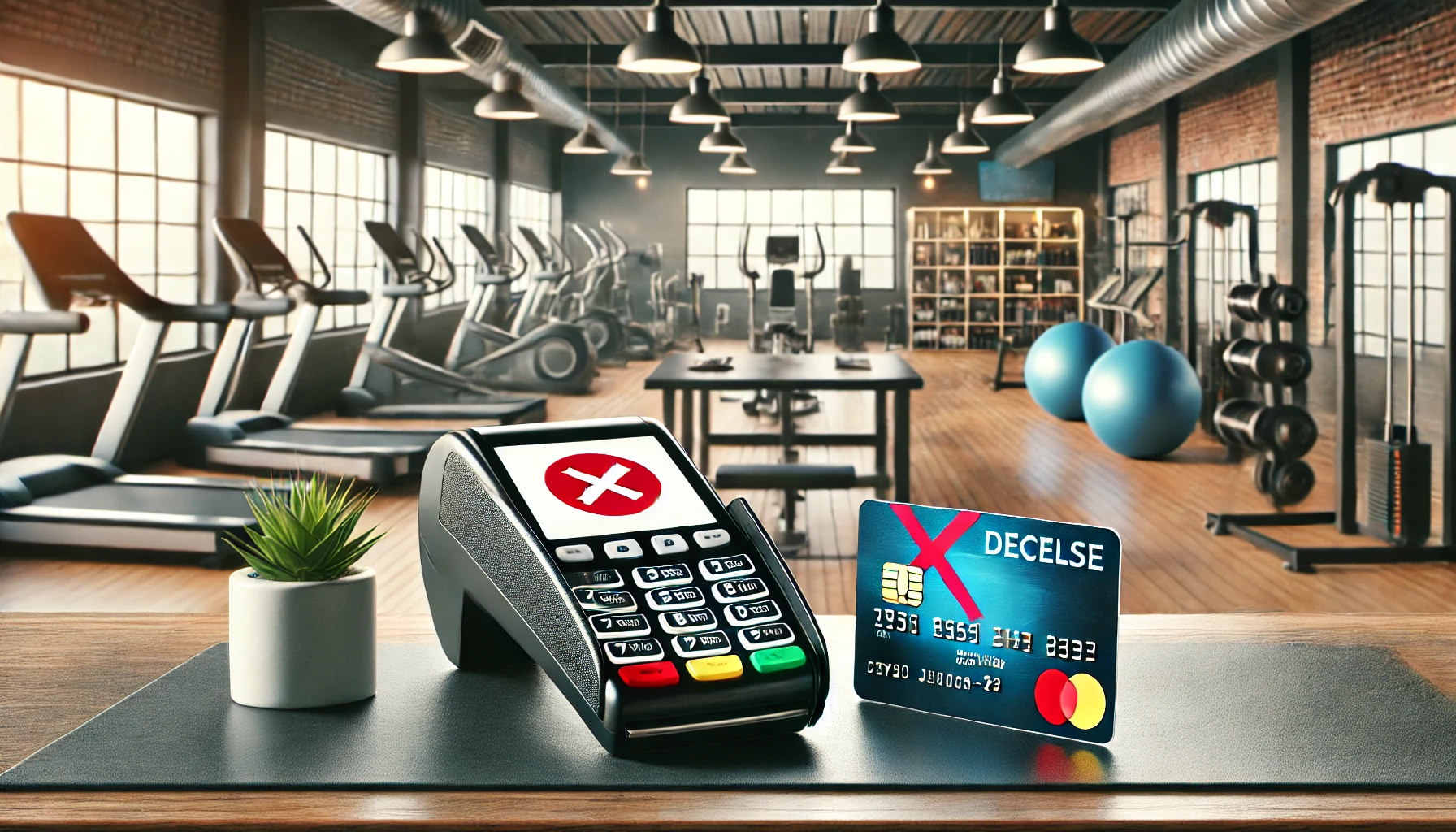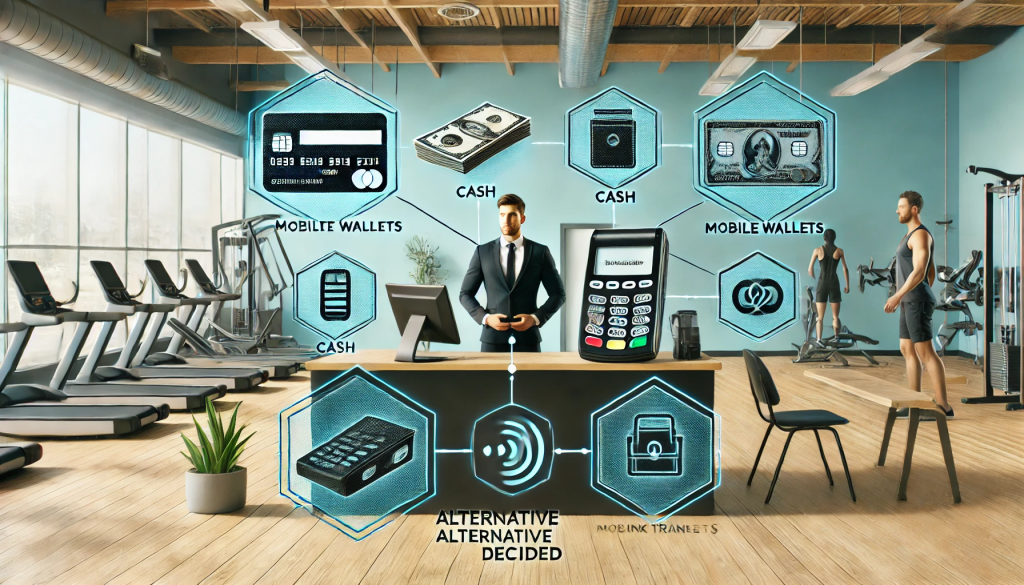
By dev October 28, 2024
In today’s digital age, credit cards have become an essential tool for making payments, including gym memberships and fitness center fees. However, credit card declines can be a frustrating experience for both fitness centers and their members. Understanding the common reasons for credit card declines and implementing strategies to prevent and troubleshoot them is crucial for the smooth operation of fitness centers.
This article will provide comprehensive insights into managing credit card declines in fitness centers, including tips for prevention, communication strategies, troubleshooting steps, alternative payment options, customer service strategies, and tracking and managing trends.
Understanding Why Credit Card Payments Are Declined

Credit card declines can happen for various reasons. Understanding these reasons is the first step in effectively managing them. Here are some common causes:
- Insufficient Funds: One of the most common reasons for credit card declines is insufficient funds in the member’s account. This can occur when the member’s account balance is lower than the amount being charged, resulting in a declined transaction.
- Expired or Invalid Card: Another common reason for credit card declines is an expired or invalid card. Members may forget to update their card information or fail to notice that their card has expired, leading to declined transactions.
- Fraud Protection: Credit card companies have robust fraud protection measures in place to safeguard their customers. If a transaction appears suspicious or deviates from the member’s usual spending patterns, the credit card company may decline the transaction to prevent potential fraud.
- Over-the-Limit: Some credit cards have a limit on the amount that can be charged. If a member exceeds this limit, their credit card may be declined.
- Technical Issues: Occasionally, credit card declines can occur due to technical issues, such as connectivity problems between the fitness center’s payment system and the credit card processor. These issues can result in declined transactions even if the member’s card is valid and has sufficient funds.
Preventing Credit Card Declines: Tips for Fitness Centers

Preventing credit card declines effectively can help your fitness center maintain revenue consistency and provide a better customer experience. Here are some best practices to follow:
- Regularly Update Card Information: Fitness centers should encourage their members to update their card information whenever there are changes, such as a new card being issued or an expiration date approaching. This can be done through an online portal or by providing a dedicated customer service line for card updates.
- Set Up Automated Payment Reminders: Fitness centers can implement automated payment reminders to notify members in advance of upcoming payments. These reminders can be sent via email or SMS, prompting members to ensure their card information is up to date and that they have sufficient funds in their account.
- Offer Multiple Payment Options: To minimize the risk of credit card declines, fitness centers should provide members with alternative payment options, such as direct debit or electronic funds transfer. This allows members to choose the payment method that works best for them and reduces reliance on credit cards.
- Implement Real-Time Payment Processing: Real-time payment processing systems can help fitness centers identify and address credit card declines immediately. By integrating their payment system with a real-time processor, fitness centers can receive instant notifications of declined transactions and take appropriate action.
- Educate Staff on Payment Processing: Fitness center staff should be trained on how to handle credit card declines and troubleshoot common issues. This includes understanding the error codes provided by the credit card processor and knowing the steps to resolve the decline.
Educating Members: Communicating Credit Card Decline Policies

- Clear and Transparent Communication: Fitness centers should clearly communicate their credit card decline policies to members. This can be done through signage at the front desk, on the website, or through email notifications. The policy should outline the steps members need to take to resolve a declined transaction and any associated fees or penalties.
- Provide Step-by-Step Instructions: When communicating credit card decline policies, fitness centers should provide step-by-step instructions on how members can update their card information or resolve the decline. This can include screenshots or video tutorials to make the process as easy as possible for members.
- Offer Assistance: Fitness centers should have dedicated customer service representatives available to assist members with credit card declines. This can be through a dedicated phone line, email support, or an in-person help desk. Prompt and helpful assistance can alleviate member frustration and ensure a positive experience.
- Regularly Remind Members to Update Card Information: In addition to automated payment reminders, fitness centers should periodically remind members to update their card information. This can be done through email newsletters, social media posts, or in-app notifications. By proactively reminding members, fitness centers can reduce the likelihood of credit card declines.
Troubleshooting Credit Card Declines: Steps for Fitness Centers
- Identify the Reason for the Decline: When a credit card is declined, fitness centers should first identify the reason for the decline. This can be done by checking the error code provided by the credit card processor or contacting the member’s credit card company for more information.
- Contact the Member: Once the reason for the decline is identified, fitness centers should contact the member to inform them of the issue and provide instructions on how to resolve it. This can be done through email, phone, or in-person communication.
- Verify Card Information: If the decline is due to expired or invalid card information, fitness centers should ask the member to update their card details. This can be done through a secure online portal or by providing a form for the member to fill out.
- Retry the Transaction: After the member has updated their card information, fitness centers should retry the transaction. If the decline was due to insufficient funds, it is important to ensure that the member’s account now has sufficient funds before retrying the transaction.
- Follow Up with the Member: Once the transaction has been retried, fitness centers should follow up with the member to confirm whether the payment was successful. This can be done through email or phone communication. If the payment was still declined, alternative payment options should be explored.
Alternative Payment Options for Members with Declined Cards

- Direct Debit: Fitness centers can offer direct debit as an alternative payment option for members with declined cards. Direct debit allows the fitness center to automatically withdraw funds from the member’s bank account on a specified date, ensuring timely payment.
- Electronic Funds Transfer (EFT): EFT allows members to transfer funds directly from their bank account to the fitness center’s account. This eliminates the need for credit cards and reduces the risk of declines.
- Cash or Check Payments: Fitness centers can also accept cash or check payments from members with declined cards. This option may be more suitable for members who prefer not to use electronic payment methods or who do not have access to alternative payment options.
- Payment Plans: In cases where a member is unable to make a full payment due to a declined card, fitness centers can offer payment plans. This allows the member to pay the outstanding balance in installments over a specified period of time.
Addressing Member Concerns: Customer Service Strategies
- Prompt and Courteous Communication: When addressing member concerns related to credit card declines, fitness centers should prioritize prompt and courteous communication. Members should feel heard and supported throughout the resolution process.
- Empathy and Understanding: Fitness center staff should approach member concerns with empathy and understanding. Credit card declines can be stressful for members, and it is important to acknowledge their frustration and work towards a solution.
- Escalation Procedures: In cases where a member’s concern cannot be resolved immediately, fitness centers should have escalation procedures in place. This ensures that member concerns are addressed by higher-level staff or management, providing a higher level of support and resolution.
- Compensation or Incentives: In situations where a member experiences significant inconvenience or frustration due to a credit card decline, fitness centers may consider offering compensation or incentives as a gesture of goodwill. This can help maintain member satisfaction and loyalty.
Analyzing Trends: Tracking and Managing Credit Card Declines
- Utilize Reporting Tools: Fitness centers should utilize reporting tools provided by their payment processor to track and analyze credit card declines. These tools can provide valuable insights into trends, such as the most common decline reasons or peak decline periods.
- Identify Patterns: By analyzing decline data, fitness centers can identify patterns and take proactive measures to prevent future declines. For example, if a particular day of the week or time of the month consistently experiences higher decline rates, fitness centers can implement targeted strategies to address the issue.
- Regularly Review and Update Policies: Based on the analysis of decline trends, fitness centers should regularly review and update their credit card decline policies. This ensures that policies remain relevant and effective in addressing common decline issues.
- Collaborate with Payment Processors: Fitness centers should maintain open lines of communication with their payment processors. By collaborating with payment processors, fitness centers can stay informed about industry trends, new technologies, and best practices for managing credit card declines.
Frequently Asked Questions (FAQs) about Credit Card Declines in Fitness Centers
Q1. What should I do if my credit card is declined at a fitness center?
If your credit card is declined at a fitness center, you should first check if you have sufficient funds in your account. If funds are available, contact the fitness center to verify your card information and retry the transaction. If the decline persists, explore alternative payment options such as direct debit or electronic funds transfer.
Q2. Why do credit cards get declined at fitness centers?
Credit cards can get declined at fitness centers for various reasons, including insufficient funds, expired or invalid card information, fraud protection measures, over-the-limit spending, or technical issues.
Q3. Can I use alternative payment methods if my credit card is declined at a fitness center?
Yes, fitness centers often offer alternative payment methods such as direct debit, electronic funds transfer, cash, or check payments for members with declined cards.
Q4. How can fitness centers prevent credit card declines?
Fitness centers can prevent credit card declines by regularly updating card information, setting up automated payment reminders, offering multiple payment options, implementing real-time payment processing, and educating staff on payment processing.
Q5. What should fitness centers do to address member concerns related to credit card declines?
Fitness centers should address member concerns related to credit card declines by providing prompt and courteous communication, showing empathy and understanding, having escalation procedures in place, and considering compensation or incentives in certain cases.
Conclusion
Managing credit card declines in fitness centers is essential for maintaining smooth operations and member satisfaction. By understanding the common reasons for credit card declines, implementing prevention strategies, educating members, troubleshooting declines effectively, offering alternative payment options, addressing member concerns, and analyzing trends, fitness centers can minimize the impact of credit card declines and ensure a positive experience for their members.
By prioritizing effective credit card decline management, fitness centers can focus on their core mission of promoting health and wellness.